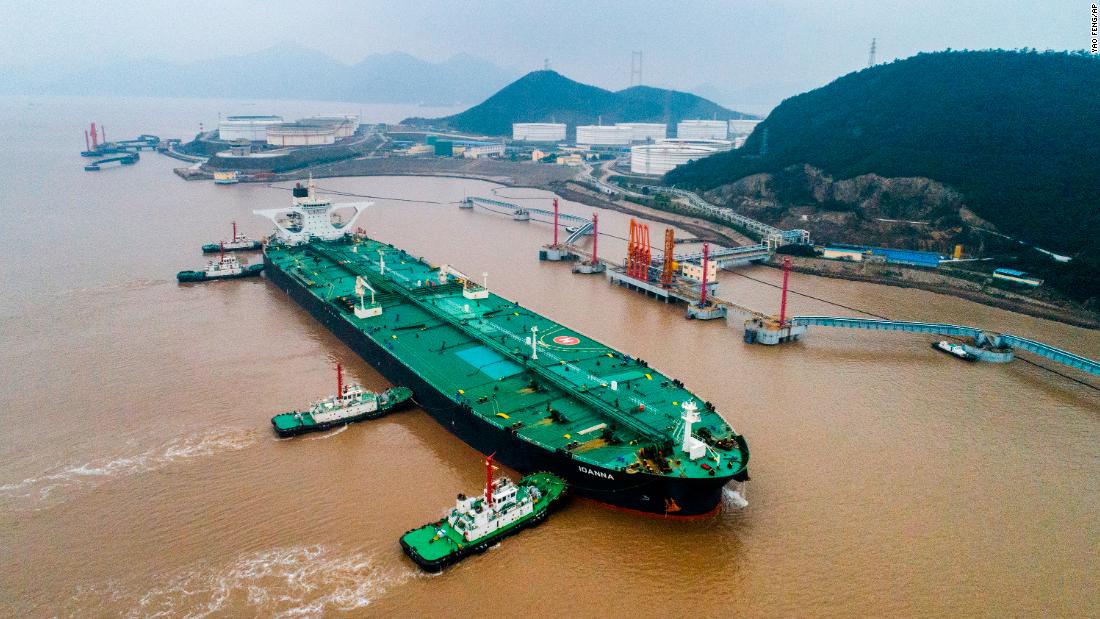Asia will feel the pain if US sanctions shut down Iran’s oil exports

The Trump administration reintroduced sanctions on Iran’s oil last year but immediately granted waivers to China, Japan, India, South Korea and Taiwan, as well as Italy, Greece and Turkey.Those exemptions are set to expire May 2. China, the world’s biggest importer of Iranian oil, and India, are among those most affected. Asia consumes more oil than any other region, accounting for more than 35% of global demand.Who will they turn to?Some countries that were granted waivers have already found alternative suppliers. Italy, Greece and Taiwan haven’t loaded any Iranian barrels since November, according to the International Energy Agency, which cited data from Kpler, a company that tracks oil shipments. China, India and South Korea are still buying from Iran.India, for one, appears to have a plan to replace its lost Iranian oil. “There will be additional supplies from other major oil producing countries,” Minister of Petroleum Dharmendra Pradhan tweeted on Tuesday.Some of those could come from America, or Iran’s big rivals in OPEC. The Trump administration on Monday indicated that the United States, Saudi Arabia and the United Arab Emirates would make sure “global oil markets remain adequately supplied.” But it gave no details.Saudi oil minister Khalid al-Falih said that the kingdom will coordinate with other producers “to ensure the availability of enough oil” and that “global oil markets are not knocked off balance.”That may be easier said than done. Iran exported about 1.4 million barrels of crude a day in March and the United States wants to bring that down to zero. Iman Nasseri, managing director for the Middle East at consulting firm Facts Global Energy, estimates that Saudi Arabia and the UAE can replace up to a million barrels a day of lost Iranian crude.The United States could also help fill the void. US production increased by 1.6 million barrels a day in 2018, and is rising further this year. And the gap may turn out to be smaller than some have feared, Nasseri added.”Depending on how much Iran can manage [to sell] outside of waivers or smuggle into others markets the disruption can be as low as 500 million barrels a day and as high as a million barrels a day,” he said. Do they have to follow US sanctions?The US administration warned that all countries that continue to import Iranian oil will be subject to US sanctions. Not all reacted well to the threat. Beijing slammed the US administration’s announcement, saying it “opposes the unilateral sanctions.” South Korean officials told CNN that they have struggled to comply with US sanctions because the country’s oil refineries are specifically setup to process crude oil from Iran. Turkey’s Foreign Minister Mevlut Cavusoglu said on Twitter that “Turkey rejects unilateral sanctions and impositions on how to conduct relations with neighbors.”Countries that don’t abide by the requirement could face harsh consequences. “Economic sanctions from the US could damage their trade flows, ability to access global financial markets and ultimately their currencies and economies,” said Russ Mould, investment director at AJ Bell. Earlier this month, Standard Chartered had to pay a hefty fine $1.1 billion to settle allegations that it repeatedly violated sanctions on Iran and other countries. Chinese telecoms group Huawei has been charged in the United States with violating sanctions on Iran. It pleaded not guilty last month. What now for oil markets?The United States says sanctions will continue until Iran ends its “pursuit of nuclear weapons.” The crackdown is adding to mounting supply concerns in the oil market. Venezuela’s oil shipments have been wiped out by US sanctions. Violence is rocking Libya, another OPEC producer. Replacing Iranian crude will leave little room for producers to respond to future supply shocks. “The problem is that they will end up having very little spare capacity left for any other emergency or any other crisis in the oil market on the supply side,” said Nasseri of Facts Global Energy. The price of oil has already reacted to the threat of tighter supply. US oil prices climbed nearly 3% on Monday to $65.70 a barrel. That represents a spike of 54% since prices closed at $42.53 a barrel on Christmas Eve. Brent crude, the global benchmark, also surged nearly 3% on Monday and touched $74 for the first time since early November. Both made more gains on Tuesday. “While it is likely still far too early … to predict oil trading back towards $100, US crude prices look set to attempt a potential target of $70 if concerns over tight supply in the global oil markets remain a major theme,” said Lukman Otunuga, research analyst at FXTM in London.Even higher oil prices could weigh further on economic growth in China and India. “With many sectors dependent on energy prices feeling the impacts of higher oil, the domino effect will most likely compound the economic woes of Asian countries that are already experiencing a slowdown,” added Otunuga.





